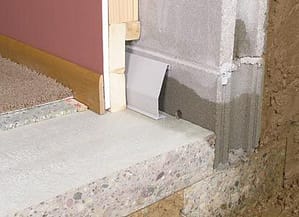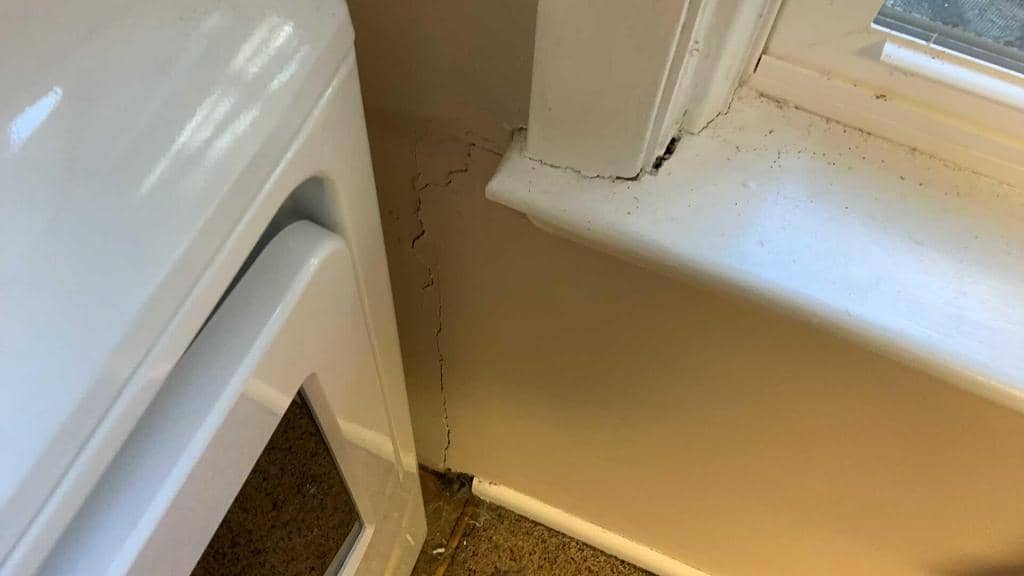The Ultimate Guide To Best Basement Waterproofing
The Ultimate Guide To Best Basement Waterproofing
Blog Article
Best Basement Waterproofing Can Be Fun For Everyone
Table of ContentsThe Definitive Guide for Best Basement WaterproofingBest Basement Waterproofing for BeginnersA Biased View of Best Basement WaterproofingFacts About Best Basement Waterproofing Uncovered8 Easy Facts About Best Basement Waterproofing Described
AdvantaClean's experienced specialists and specialists will certainly locate the water source. If wall surface or slab cracks are existing, we will infuse polyurethane and epoxies into the splits and seal the compromise, avoiding further moisture from entering.
If there's condensation on the exterior of the aluminum foil, you have high humidity in your basement. If the aluminum foil has condensation on the within surface area (following to the wall), the dirt around your residence might be normally damp from a high water table or inadequate soil water drainage.
You can waterproof simply your indoor wall surfaces, which may fix the trouble. Or you can waterproof your outside walls, which is a better wager but even more costly. Here's the scoop on the various kinds: These thick layers are cement-like. Once they dry, they adhere completely to concrete and stonework wall surfaces (Best Basement Waterproofing).
Not known Details About Best Basement Waterproofing
Swirl the brush at the last stage of application to give the wall an appealing, completed look. Concrete waterproof finishings can't be applied to formerly repainted surface areas; examine the label. A 5-gallon container expenses regarding $60. Recognized as densifiers, they are ideal just for walls that have not been painted or sealed.
But you brush, roll, or spray it on a lot more heavily one gallon covers simply 75 square feet, not the 300 square feet typical with standard paint. Water-proof paint is great for do it yourself application. You can apply it over painted surface areas, and paint over it once it's treated (one gallon expenses $37).
It can set you back $10,000 to $15,000, depending on the job needed. Exterior waterproofing entails excavating all around the house to the complete deepness of the foundation wall surfaces, after that mounting a water-proof finishing or membrane layer covered by water drainage panels.
We've all been captured in a storm without any umbrella or raincoat (Best Basement Waterproofing). And it's constantly a recipe for catastrophe: whatever's wet, your hairdo is messed up, and things are obtaining mildewy. A cellar without waterproofing is kind of like that. Minus the wrecked hairstyle part. Your cellar does not wish to experience a downpour without proper security equally as long as you don't intend to.
Getting My Best Basement Waterproofing To Work
If you've done your research, you 'd recognize there are 2 kinds of waterproofing: interior and outside. It can get confusing what they both mean, which one's a far better investment, and what will really keep the water out. Don't fret, we assembled this blog site to conveniently define both approaches for you and talk about the advantages and disadvantages of each.
Outside waterproofing is a waterproofing method that entails securing your home from the exterior. The structure walls are after that cleaned, secured, and covered with a water resistant membrane or sealer.

Best Basement Waterproofing Can Be Fun For Everyone
It's a more engaged process that calls for excavating up your backyard, which is expensive and taxing. Exterior waterproofing includes eliminating whatever bordering your home, consisting of patios, driveways, pathways, landscaping, AC systems, decks, and so forth. If any of the work was done incorrectly and water is still entering your basement, there isn't much you can do to correct or fix it.
Interior basement waterproofing entails waterproofing from the within. Any water that leaks right into your basement is redirected prior to it touches your floor. It's sort of like putting on a raincoat under your clothing. It involves 2 points: a water link drain track and a sump pump. It works by sealing the inside of your cellar walls and floors so water that attempts to get in is funnelled out through a sump pump.
It's an efficient technique to waterproof your basement - Best Basement Waterproofing. The downside of interior cellar waterproofing mainly pertains to the installment process. This technique needs kept things, furnishings, and integrated shelving or cabinets to be moved from touching the cellar wall surfaces. And during setup, your cellar can't be utilized. The greatest difference between the 2 methods is this: Outside waterproofing is a preventative remedy and interior waterproofing is a corrective option.
The 5-Minute Rule for Best Basement Waterproofing
In final thought, outside and interior basement waterproofing are both reliable techniques of securing your home from water damage. Exterior waterproofing produces a barrier that prevents water from entering your home, while interior waterproofing redirects water that does enter your home. And it's essential to note that exterior waterproofing is a costly and disruptive installment process when contrasted to interior visit the site waterproofing.
Whichever method you pick, make sure you pick a reputable and reliable specialist for the task. If you have any concerns about basement waterproofing, please get to out to us.
You can fill in our kind below, begin a chat in the bottom right-hand corner, or call us at 1-800-827-0702.
Report this page